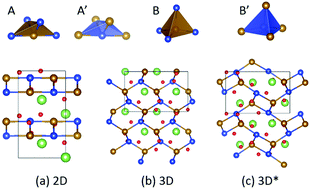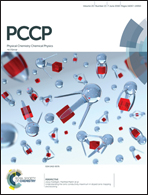Fe–Si networks and charge/discharge-induced phase transitions in Li2FeSiO4 cathode materials†
Abstract
Structural phase transitions of electrode materials are responsible for poor reversibility during charge/discharge cycling in Li-ion batteries. Using previously developed structural databases, we investigate a structural landscape for LixFeSiO4 systems at x = 1. Starting with low-energy Li2FeSiO4 crystal structures, we explore the crystal structures of the material in different states of charge. The as-prepared Li2FeSiO4 materials adopt low energy structures characterized by two-dimensional (2D) Fe–Si networks. After the removal of one Li per formula unit to form LiFeSiO4, the structures with three-dimensional (3D) diamond-like Fe–Si networks become more energetically favorable without a significant impact on the charge capacity, which agrees with previous experimental and theoretical work. However, we reveal that the structure with a 3D diamond-like Fe–Si network can further transform into a new structure at x = 1. And the Li atom is hard to reinsert into these new structures. Consequently the system is prevented from returning to the Li2FeSiO4 state. We believe that the formation of this new structure plays an important role in the loss of reversible capacity of Li2FeSiO4 electrode materials.



 Please wait while we load your content...
Please wait while we load your content...
